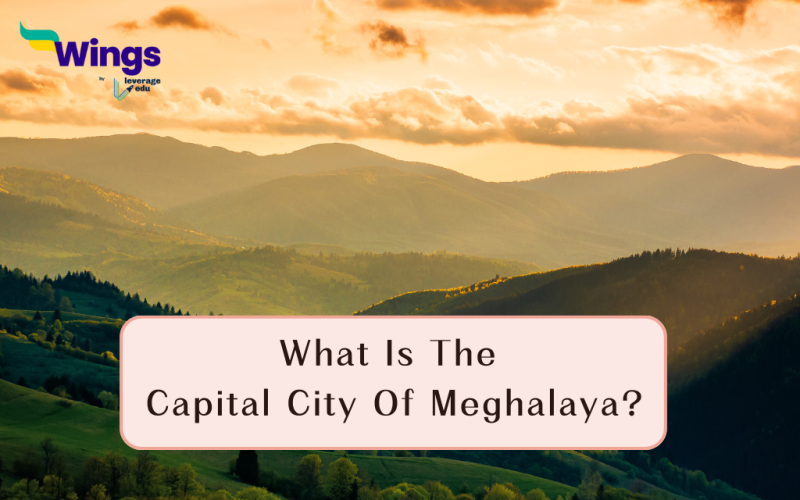In the beautiful hills of northeast India, Shillong is the capital of Meghalaya. This hill station, often called the “Scotland of the East,” possesses a delightful climate and breathtaking landscapes. Imagine cool breezes whispering through pine trees, breathtaking waterfalls and gardens like Lady Hydari Park. Shillong’s charm extends beyond scenery, with a vibrant culture and rich tribal heritage waiting to be explored. Read this blog to learn more about what is the capital city of Meghalaya.
Also read: What is the Capital City of Manipur?
Shillong’s Overview
Table of Contents [show]
In 1846, the British government made the Khasi and Jaintia hills the civil stations which expanded Shilong in size, moreover;
- In 1874, Shillong was chosen as the headquarters of the new administration because of its convenient location between the Surma and Brahmaputra valleys
- Shillong’s climate is considered to be much cooler than tropical India
- Until the creation of the new state of Meghalaya on 21 January 1972, Shillong was the capital of undivided Assam.
- Shillong became Meghalaya’s capital, while Assam’s capital was moved to Dispur in Guwahati.
- Shillong has numerous parts: a bustling downtown area that coexists with peaceful neighbourhoods filled with whistling pines.
Shillong’s History
Shillong has a vibrant history mixed with various cultures, whether during or after the colonial period. Shillong has experienced many changes over the years and developed itself as a modern city.
- Before the arrival of the British, the Khasi people were the original inhabitants of the region of Shillong.
- In 1864, the colonial British government established a sanitarium in the region of Shillong to escape the heat of the plains of India.
- In 1874 Shillong became the capital of undivided Assam because of its pleasant climate and strategic location.
- The British took a major reconstruction work when an Earthquake jolted the area of Shillong in 1897.
- Shillong served as the headquarters of the North East Frontier Agency (NEFA) until 1972, which later became Arunachal Pradesh.
- After India’s Partition in 1947, several migrants shifted to Shillong and a major portion of these migrants were from the areas which are now in Bangladesh.
- With the creation of Meghalaya state in 1972, Shillong became its capital, while Assam shifted its capital to Dispur.
Also read: What Is The Capital City Of Telangana?
Geography and Demography Of Shillong
Shillong, the capital city of Meghalaya, is a mountain area located in the hills of the Shillong Plateau in northeastern India. Here are some important geographic and demographic pointers about Shillong:
- Shillong is located 1,520 meters above sea level and occupies a major position on the Shillong Plateau.
- Lum Sohpethbneng, Lum Diengiei, and Lum Shyllong in the Khasi tradition, are the major hills that surround the area of Shillong.
- The city’s climate is one of the major tourist attractions. In summer, the temperature remains around 20 degrees Celsius, and the temperature is around 4.7 degrees Celsius in winter.
- From June to September, the city experiences heavy rainfall.
- Shillong had a population of around 143,229, according to the 2011 census.
- The dominant tribe of the region is the Khasi, which forms the majority of the ethnic group.
- Other communities include Jaintias, Garos, Bengalis, Nepalis, and Biharis.
- The predominant religion is Christianity, followed by Hinduism, Islam, and various other faiths.
FAQs
The capital city of Meghalaya is Shillong. Known as the “Scotland of the East,” Shillong has stunning landscapes, a delightful climate, and a rich cultural heritage.
Shillong became the capital of Meghalaya when the state was formed on January 21, 1972. Before that, it served as the capital of undivided Assam.
According to the 2011 census, Shillong had a population of around 143,229 people. The city is home to various ethnic groups, with the Khasi tribe forming a significant portion of the population.
Relevant Blogs
That is all about what is the capital city of Meghalaya! If you want to know more about topics like this, then visit our general knowledge page!
 One app for all your study abroad needs
One app for all your study abroad needs















 45,000+ students trusted us with their dreams. Take the first step today!
45,000+ students trusted us with their dreams. Take the first step today!
